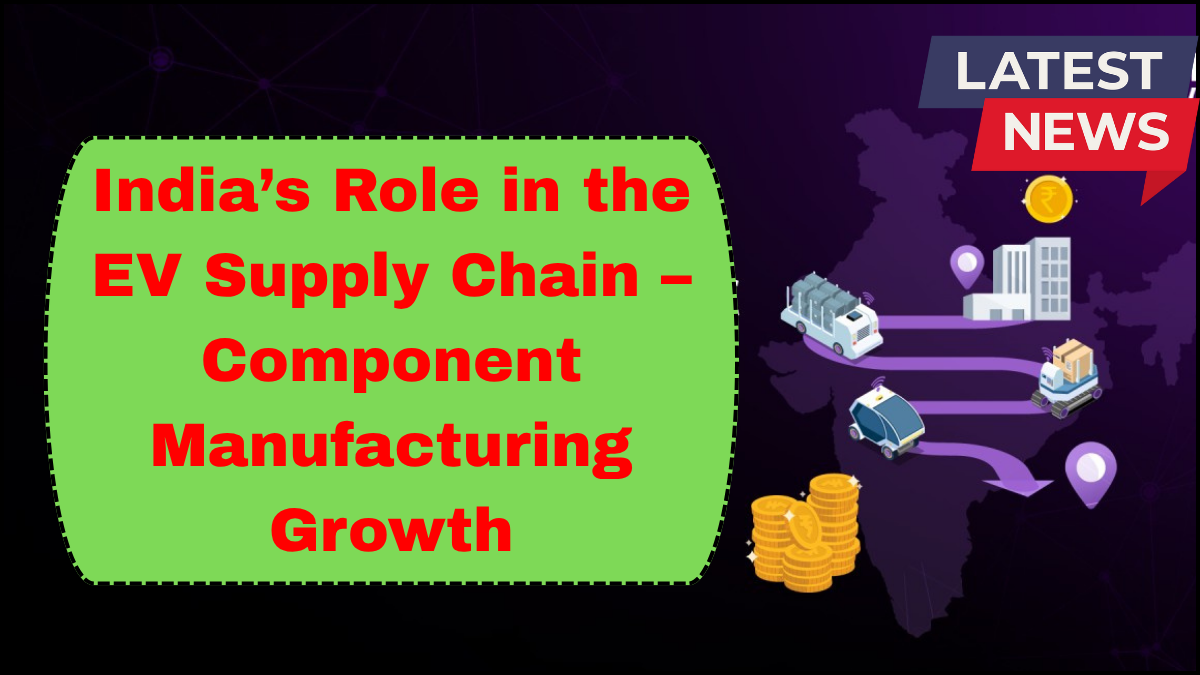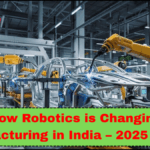India is rapidly emerging as a critical player in the global electric vehicle (EV) supply chain. As the world accelerates toward electrification, India’s robust manufacturing base, government incentives, and expanding domestic demand are positioning it as a hub for EV component sourcing and production. The country is not just assembling EVs; it’s building the foundation—motor parts, battery packs, semiconductors, and electronic systems—essential to the ecosystem.

The Strategic Push Toward EV Localization
The Indian government’s aggressive push for EV adoption through policies such as FAME II (Faster Adoption and Manufacturing of Hybrid and Electric Vehicles) and the PLI (Production Linked Incentive) scheme is paying dividends. These policies aim to localize key elements of the EV supply chain in India, reducing dependence on imports and enhancing self-reliance in advanced automotive technologies.
Localizing component manufacturing is not just a matter of policy but a necessity. As global supply chains face disruptions and costs rise, localized sourcing offers resilience, speed, and cost-effectiveness.
Rise of Domestic Component Manufacturing
India’s component manufacturing sector is undergoing a transformation. Traditional auto part suppliers are diversifying into EV-specific components like:
-
Battery Management Systems (BMS)
-
Electric motors and controllers
-
Thermal management systems
-
Power electronics
Companies like Tata AutoComp, Bharat Forge, and Amara Raja are investing heavily in the EV ecosystem. Global manufacturers are also partnering with Indian firms to set up joint ventures, tapping into the country’s engineering talent and cost advantages.
Battery Ecosystem: The Heart of the EV Supply Chain
Battery packs account for up to 40% of an EV’s cost. India is focusing on indigenizing this critical component. The PLI scheme for ACC (Advanced Chemistry Cells) is incentivizing domestic battery production at scale.
Several players like Reliance New Energy, Ola Electric, and Exide have announced multi-billion-dollar investments in Gigafactories. These facilities aim to reduce India’s reliance on Chinese battery cells and bring production closer to demand centers.
In addition, the search for domestic sources of lithium and cobalt, and efforts in battery recycling, are essential steps toward building a sustainable EV supply chain in India.
Semiconductors and Power Electronics: The Next Frontier
While India currently imports most of its EV-grade semiconductors, the government has unveiled plans to develop a domestic semiconductor manufacturing ecosystem. Initiatives like the India Semiconductor Mission are expected to create a ripple effect across the entire EV sector.
Power electronics—such as inverters, converters, and onboard chargers—are being increasingly manufactured domestically by both startups and established firms. This shift will be crucial to ensure full-stack integration of EV systems in India.
Role of MSMEs and Startups in Component Sourcing
Micro, Small, and Medium Enterprises (MSMEs) are playing a key role in component sourcing for EVs. Many are pivoting from ICE (Internal Combustion Engine) parts to EV-compatible systems, often collaborating with R&D labs and OEMs for design innovations.
Startups like Vecmocon, Log9 Materials, and Matter are developing indigenous EV tech—from BMS and battery packs to drivetrain solutions. Their agility and innovation are helping India fill gaps in the supply chain faster than larger incumbents can.
Export Opportunities and Global Integration
India’s manufacturing cost advantage and increasing quality standards are making it an attractive export hub. Major automakers and Tier 1 suppliers are sourcing EV components from Indian vendors for their global operations. Countries in Europe, Africa, and Southeast Asia are beginning to recognize India as a competitive source for quality EV parts.
This growing integration into the global EV supply network is strengthening India’s position in the broader clean mobility transition.
Challenges Ahead and the Road to 2030
Despite the progress, challenges remain. India still depends on imports for key raw materials like lithium, and technology gaps persist in areas like high-efficiency motors and advanced battery chemistries.
To fully capitalize on its potential, India must:
-
Scale up skill development and technical training
-
Boost R&D in advanced materials and software integration
-
Secure long-term access to critical minerals via international partnerships
Conclusion
India is not just adopting EVs—it is becoming a vital cog in the global EV supply chain. From component sourcing to full-system integration, India’s role is expanding rapidly. Strategic policy support, domestic innovation, and international collaboration are propelling the country toward becoming a global manufacturing powerhouse in the EV era.
FAQs
Q1: Why is India becoming important in the global EV supply chain?
India offers a large talent pool, cost-effective manufacturing, policy incentives, and growing EV demand, all of which are attracting global investment into EV components and systems.
Q2: What are the key components being manufactured in India for EVs?
India is producing electric motors, battery packs, power electronics, BMS, and thermal systems—all crucial for EV performance.
Q3: How is the government supporting EV component manufacturing?
The FAME II and PLI schemes incentivize localized production of EV parts and batteries, while also supporting R&D and infrastructure development.
Q4: Are Indian companies exporting EV components?
Yes. With growing quality standards and competitive pricing, Indian firms are now exporting EV parts to Europe, Asia, and Africa.
Q5: What is the biggest challenge India faces in scaling EV component manufacturing?
Securing raw materials, particularly lithium and cobalt, and bridging the technology gap in advanced systems like semiconductors and next-gen batteries remain major hurdles.
click here to learn more



